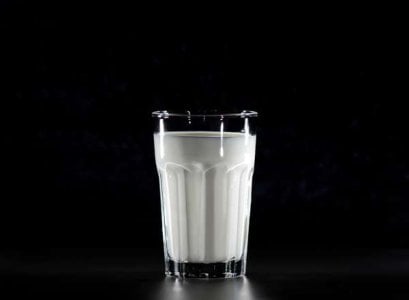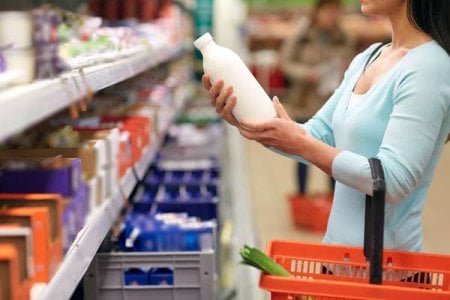Expected Milk Price Hike Sparks Concern
Milk is a household staple in most Australian homes—it's what we douse our early morning wake-up brew with, the main ingredient in our creamy pasta sauces, and, let’s not forget, the indispensable partner to our beloved cereals
Simply put, it’s almost impossible for an Australian household to go a day without enjoying a glass of chilled milk or one of its many by-products.
If that description falls true for you, we're afraid we have a rather disheartening prediction for you today—your dear cup of milk is about to get a bit pricier at the supermarket.
Our national dairy industry has been gradually shrinking over the last couple of decades. With less supply available to satiate the collective thirst of the Aussie consumer base, prices are seemingly bound to go up.

Mark Billing, the United Dairy Farmers of Victoria president, stepped up to help us understand this increasing concern.
Over recent decades, he explains, many milk producers had to call it quits because milk wasn’t bringing home the bacon. This scarcity has made milk a bit of a hot commodity.
'Milk prices at the shelf had stayed stable for 10 or 15 years or more. Thus, the milk price at the retail level has not kept up with inflation at all.' Billing emphasised.
He painted a visibly grim picture of the milk industry by mentioning that the national milk pool was down by 5.3 per cent at the end of May 2023 compared with the same period the previous year. This means that milk is no longer as abundant as it once was.
In response to this growing milk scarcity, the cost of our dairy delights increased by a whopping 15.1 per cent between May 2022 and May 2023, according to the Australian Bureau of Statistics.
It seems our milk is about to become even costlier, with dairy processors indicating their intentions to increase the farm gate price of milk for suppliers.

But don't let this news curdle your spirits just yet! Our loyal Aussie dairy farmers are in sore need of some good news.
A cost increase on milk has been a long time coming, especially when you consider how the number of dairy farmers in Victoria took a deep plunge from 14,000 in the 1970s to a mere 3,000 today.
‘In the 1970s ... there were around 14,000 dairy farmers in Victoria. There’s now 3,000.’ he said.
In concrete terms, Billing confirmed, 'We're still in negative (price) territory from a dairy farmer's point of view because dairy prices didn't move for so long in relative terms. We've got to see movement at the retail level if we want to sustain a profitable dairy industry in Australia.'
The price bump isn't merely a money grab from your pockets. It's a lifeline to a struggling industry and, more specifically, to the Aussie farmers who've toiled relentlessly to ensure our families receive fresh and nutritious milk.

As we wrap up, let's ponder on this question: How can we support our local dairy farmers and ensure the sustainability of the Australian dairy industry while navigating potential price increases?
Let's take a moment to reflect on the actions we can take as consumers to make a positive difference and show our appreciation for the hard work of our dairy farmers.
Simply put, it’s almost impossible for an Australian household to go a day without enjoying a glass of chilled milk or one of its many by-products.
If that description falls true for you, we're afraid we have a rather disheartening prediction for you today—your dear cup of milk is about to get a bit pricier at the supermarket.
Our national dairy industry has been gradually shrinking over the last couple of decades. With less supply available to satiate the collective thirst of the Aussie consumer base, prices are seemingly bound to go up.

The recent increase in milk prices has been attributed to various factors, posing challenges for consumers and the dairy industry alike. Image by Alexas Fotos from pexels
Mark Billing, the United Dairy Farmers of Victoria president, stepped up to help us understand this increasing concern.
Over recent decades, he explains, many milk producers had to call it quits because milk wasn’t bringing home the bacon. This scarcity has made milk a bit of a hot commodity.
'Milk prices at the shelf had stayed stable for 10 or 15 years or more. Thus, the milk price at the retail level has not kept up with inflation at all.' Billing emphasised.
He painted a visibly grim picture of the milk industry by mentioning that the national milk pool was down by 5.3 per cent at the end of May 2023 compared with the same period the previous year. This means that milk is no longer as abundant as it once was.
In response to this growing milk scarcity, the cost of our dairy delights increased by a whopping 15.1 per cent between May 2022 and May 2023, according to the Australian Bureau of Statistics.
It seems our milk is about to become even costlier, with dairy processors indicating their intentions to increase the farm gate price of milk for suppliers.

Supporting local dairy farmers helps sustain the local economy, promotes food security, and ensures the availability of fresh, high-quality dairy products while fostering a sense of community and preserving traditional farming practices for future generations. Image from shutterstock
But don't let this news curdle your spirits just yet! Our loyal Aussie dairy farmers are in sore need of some good news.
A cost increase on milk has been a long time coming, especially when you consider how the number of dairy farmers in Victoria took a deep plunge from 14,000 in the 1970s to a mere 3,000 today.
‘In the 1970s ... there were around 14,000 dairy farmers in Victoria. There’s now 3,000.’ he said.
In concrete terms, Billing confirmed, 'We're still in negative (price) territory from a dairy farmer's point of view because dairy prices didn't move for so long in relative terms. We've got to see movement at the retail level if we want to sustain a profitable dairy industry in Australia.'
The price bump isn't merely a money grab from your pockets. It's a lifeline to a struggling industry and, more specifically, to the Aussie farmers who've toiled relentlessly to ensure our families receive fresh and nutritious milk.
Key Takeaways
- The price of milk in Australia is likely to rise due to a decrease in supply from the shrinking Australian dairy industry.
- Increased production costs and weather have presented ongoing challenges for dairy farmers.
- The Australian Dairy Producers Federation reports a 5.3 per cent drop in the national milk pool compared to the same period last year. In comparison, the Australian Bureau of Statistics recorded an increase in dairy product prices of 15.1 per cent between May 2022 and May 2023.
As we wrap up, let's ponder on this question: How can we support our local dairy farmers and ensure the sustainability of the Australian dairy industry while navigating potential price increases?
Let's take a moment to reflect on the actions we can take as consumers to make a positive difference and show our appreciation for the hard work of our dairy farmers.







